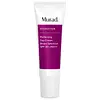What's inside
What's inside
 Key Ingredients
Key Ingredients

 Benefits
Benefits

 Concerns
Concerns

 Ingredients Side-by-side
Ingredients Side-by-side

Butyl Methoxydibenzoylmethane
UV AbsorberHomosalate 2%
Skin ConditioningEthylhexyl Methoxycinnamate 7.5%
UV AbsorberEthylhexyl Salicylate 5%
UV AbsorberBenzophenone-3 4%
UV AbsorberWater
Skin ConditioningButylene Glycol
HumectantPentylene Glycol
Skin ConditioningGlyceryl Stearate
EmollientPEG-100 Stearate
Diisopropyl Sebacate
EmollientIsodecyl Neopentanoate
EmollientLauryl Lactate
EmollientStearic Acid
CleansingSorbitan Stearate
EmulsifyingUrea
BufferingYeast Amino Acids
HumectantTrehalose
HumectantInositol
HumectantTaurine
BufferingBetaine
HumectantPhospholipids
Skin ConditioningRetinyl Palmitate
Skin ConditioningTocopheryl Acetate
AntioxidantAscorbyl Palmitate
AntioxidantCetearyl Alcohol
EmollientCeteareth-20
CleansingCitrus Medica Limonum Peel Extract
EmollientCalendula Officinalis Flower Extract
MaskingGlycolipids
Skin ConditioningSodium Hyaluronate
HumectantLecithin
EmollientTocopherol
AntioxidantHydrogen Peroxide
AntimicrobialDipotassium Glycyrrhizate
HumectantPunica Granatum Extract
AstringentMagnesium Ascorbyl Phosphate
AntioxidantHydrolyzed Soy Flour
Skin ConditioningAvena Sativa Kernel Protein
Skin ConditioningPalmitoyl Hydroxypropyltrimonium Amylopectin/Glycerin Crosspolymer
Skin ConditioningVitis Vinifera Seed Extract
AntimicrobialCamellia Sinensis Leaf Extract
AntimicrobialOenothera Biennis Oil
EmollientBorago Officinalis Seed Oil
EmollientSodium PCA
HumectantDimethicone
EmollientPropylene Glycol
HumectantCarbomer
Emulsion StabilisingSclerotium Gum
Emulsion StabilisingAminomethyl Propanol
BufferingChlorphenesin
AntimicrobialPhenoxyethanol
PreservativeMethylparaben
PreservativePropylparaben
PreservativeDisodium EDTA
Linalool
PerfumingLavandula Angustifolia Oil
MaskingButyl Methoxydibenzoylmethane, Homosalate 2%, Ethylhexyl Methoxycinnamate 7.5%, Ethylhexyl Salicylate 5%, Benzophenone-3 4%, Water, Butylene Glycol, Pentylene Glycol, Glyceryl Stearate, PEG-100 Stearate, Diisopropyl Sebacate, Isodecyl Neopentanoate, Lauryl Lactate, Stearic Acid, Sorbitan Stearate, Urea, Yeast Amino Acids, Trehalose, Inositol, Taurine, Betaine, Phospholipids, Retinyl Palmitate, Tocopheryl Acetate, Ascorbyl Palmitate, Cetearyl Alcohol, Ceteareth-20, Citrus Medica Limonum Peel Extract, Calendula Officinalis Flower Extract, Glycolipids, Sodium Hyaluronate, Lecithin, Tocopherol, Hydrogen Peroxide, Dipotassium Glycyrrhizate, Punica Granatum Extract, Magnesium Ascorbyl Phosphate, Hydrolyzed Soy Flour, Avena Sativa Kernel Protein, Palmitoyl Hydroxypropyltrimonium Amylopectin/Glycerin Crosspolymer, Vitis Vinifera Seed Extract, Camellia Sinensis Leaf Extract, Oenothera Biennis Oil, Borago Officinalis Seed Oil, Sodium PCA, Dimethicone, Propylene Glycol, Carbomer, Sclerotium Gum, Aminomethyl Propanol, Chlorphenesin, Phenoxyethanol, Methylparaben, Propylparaben, Disodium EDTA, Linalool, Lavandula Angustifolia Oil
Water
Skin ConditioningGlycerin
HumectantCyclopentasiloxane
EmollientDimethicone
EmollientPentylene Glycol
Skin ConditioningEthylhexyl Methoxycrylene
Skin ConditioningPolyester-8
Skin ConditioningPolyglyceryl-3 Polydimethylsiloxyethyl Dimethicone
Skin ConditioningHydroxyethyl Acrylate/Sodium Acryloyldimethyl Taurate Copolymer
Emulsion StabilisingBenzyl Alcohol
PerfumingAluminum Hydroxide
EmollientStearic Acid
CleansingDiethylhexyl Syringylidenemalonate
Skin ProtectingHydrogenated Lecithin
EmulsifyingIsohexadecane
EmollientBisabolol
MaskingTetrahexyldecyl Ascorbate
AntioxidantPhenoxyethanol
PreservativePolysilicone-11
Polysorbate 60
EmulsifyingCaprylic/Capric Triglyceride
MaskingSodium Benzoate
MaskingPotassium Sorbate
PreservativeXanthan Gum
EmulsifyingHydrogenated Phosphatidylcholine
EmulsifyingThioctic Acid
AntioxidantAstaxanthin
Skin ConditioningWater, Glycerin, Cyclopentasiloxane, Dimethicone, Pentylene Glycol, Ethylhexyl Methoxycrylene, Polyester-8, Polyglyceryl-3 Polydimethylsiloxyethyl Dimethicone, Hydroxyethyl Acrylate/Sodium Acryloyldimethyl Taurate Copolymer, Benzyl Alcohol, Aluminum Hydroxide, Stearic Acid, Diethylhexyl Syringylidenemalonate, Hydrogenated Lecithin, Isohexadecane, Bisabolol, Tetrahexyldecyl Ascorbate, Phenoxyethanol, Polysilicone-11, Polysorbate 60, Caprylic/Capric Triglyceride, Sodium Benzoate, Potassium Sorbate, Xanthan Gum, Hydrogenated Phosphatidylcholine, Thioctic Acid, Astaxanthin
Ingredients Explained
These ingredients are found in both products.
Ingredients higher up in an ingredient list are typically present in a larger amount.
Dimethicone is a type of synthetic silicone created from natural materials such as quartz.
What it does:
Dimethicone comes in different viscosities:
Depending on the viscosity, dimethicone has different properties.
Ingredients lists don't always show which type is used, so we recommend reaching out to the brand if you have questions about the viscosity.
This ingredient is unlikely to cause irritation because it does not get absorbed into skin. However, people with silicone allergies should be careful about using this ingredient.
Note: Dimethicone may contribute to pilling. This is because it is not oil or water soluble, so pilling may occur when layered with products. When mixed with heavy oils in a formula, the outcome is also quite greasy.
Learn more about DimethiconePentylene glycol is typically used within a product to thicken it. It also adds a smooth, soft, and moisturizing feel to the product. It is naturally found in plants such as sugar beets.
The hydrophilic trait of Pentylene Glycol makes it a humectant. As a humectant, Pentylene Glycol helps draw moisture from the air to your skin. This can help keep your skin hydrated.
This property also makes Pentylene Glycol a great texture enhancer. It can also help thicken or stabilize a product.
Pentylene Glycol also acts as a mild preservative and helps to keep a product microbe-free.
Some people may experience mild eye and skin irritation from Pentylene Glycol. We always recommend speaking with a professional about using this ingredient in your routine.
Pentylene Glycol has a low molecular weight and is part of the 1,2-glycol family.
Learn more about Pentylene GlycolPhenoxyethanol is a preservative that has germicide, antimicrobial, and aromatic properties. Studies show that phenoxyethanol can prevent microbial growth. By itself, it has a scent that is similar to that of a rose.
It's often used in formulations along with Caprylyl Glycol to preserve the shelf life of products.
Stearic Acid is a fatty acid. It is an emollient, emulsifier, and texture enhancer.
As an emollient, stearic acid helps soften skin. It aids the skin's protective barrier by preventing water loss. It also provides a gentle cleansing effect without stripping away natural oils.
Stearic acid may also be used to enhance the texture of products. It can add volume and stabilize ingredients such as water and oil. This can help water and oil ingredients from separating.
Sources of stearic acid include animal or vegetable fats/oils such as coconut or shea. It can be naturally found in butter, cocoa butter, shea butter, vegetable fats, and animal tallow.
This ingredient may not be Malassezia folliculitis, or fungal-acne safe.
Learn more about Stearic AcidWater. It's the most common cosmetic ingredient of all. You'll usually see it at the top of ingredient lists, meaning that it makes up the largest part of the product.
So why is it so popular? Water most often acts as a solvent - this means that it helps dissolve other ingredients into the formulation.
You'll also recognize water as that liquid we all need to stay alive. If you see this, drink a glass of water. Stay hydrated!
Learn more about Water